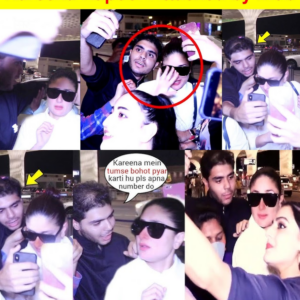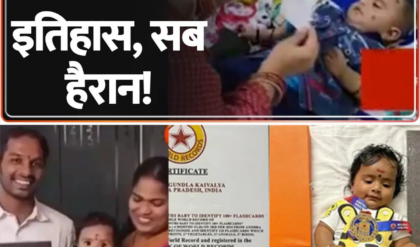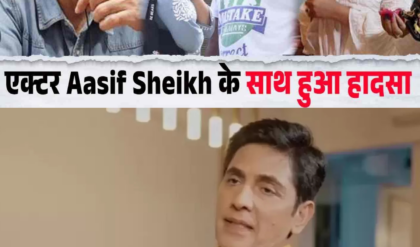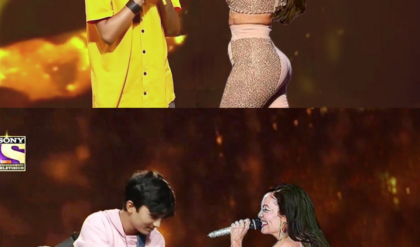Rachel Daily | EP.1: Diwali Festival Celebration with Rachel
.
.
Welcome to the very first episode of Rachel Daily! I’m Rachel, and in this brand-new series, I’ll be taking you along on some of my most exciting adventures, sharing stories from different cultures, and diving deep into the traditions, celebrations, and everything in between.
Each episode will be filled with love, learning, and of course, tons of fun!
For today’s special debut, we’re going to explore one of the most widely celebrated festivals in the world — Diwali, the Festival of Lights.
Diwali is not just about lights and sweets (although those are definitely part of the magic); it’s about family, reflection, new beginnings, and, most importantly, spreading joy and positivity to the world.
Whether you’re already familiar with Diwali or hearing about it for the first time, I hope this episode gives you a deeper understanding of why it’s so special to millions of people across the globe.
So grab your favorite snack, get comfy, and let’s dive into this joyous celebration together!
What is Diwali?
Diwali, or Deepavali as it’s sometimes called, is a Hindu festival that typically falls in October or November, depending on the lunar calendar. The word “Diwali” itself means “a row of lights,” which beautifully captures the essence of the festival.
Imagine streets and homes all lit up with thousands of flickering lamps, bursting with vibrant colors, as families come together to celebrate the triumph of good over evil, light over darkness, and knowledge over ignorance.
While Diwali is predominantly celebrated in India, it’s also observed by millions of people in countries like Nepal, Sri Lanka, Bangladesh, Pakistan, and even among the Indian diaspora in the United States, Canada, the UK, and other parts of the world.
Each region may have its own customs and ways of celebrating, but the core theme remains the same — the victory of light.
There’s not just one story behind Diwali but several, with different regions emphasizing different legends. One of the most widely known myths is the return of Lord Rama, an incarnation of the Hindu god Vishnu, to his kingdom after 14 years of exile.
Rama, along with his wife Sita, brother Lakshmana, and devoted companion Hanuman, triumphs over the demon king Ravana. People lit oil lamps (called diyas) to guide the royal family back to their home, symbolizing the dispelling of darkness and ignorance.
For others, Diwali celebrates the goddess Lakshmi, the deity of wealth, prosperity, and good fortune. On this day, businesses close their old books and open new ones, signifying a fresh start for the coming year.
The Pre-Diwali Preparations:
In my experience, the excitement for Diwali begins long before the festival itself. Weeks in advance, homes are cleaned, decluttered, and sometimes even renovated.
This is rooted in the belief that Lakshmi, the goddess of wealth, will only visit clean and tidy spaces. It’s a time for families to give their homes a fresh look and usher in good fortune.
One of the biggest tasks in the lead-up to Diwali is the preparation of rangoli. These are intricate, colorful patterns made from colored powders, rice, or flower petals, created at the entrance of homes.
Rangoli not only adds beauty to the house but is also thought to welcome guests and deities with good vibes. Some of the designs are inspired by geometric shapes, while others depict motifs like flowers, peacocks, or even the goddess Lakshmi herself.
I absolutely love the process of making rangoli. It requires patience, precision, and a lot of creativity. The best part is seeing the final design come together, and knowing that you’ve created something meaningful.
It’s a wonderful family activity, too — everyone pitches in, whether they’re experienced artists or just having fun with it.
Then, of course, there’s the shopping. Diwali is a time for new clothes, so it’s common to buy fresh outfits for the occasion.
Traditional attire varies by region, but the most popular choices are brightly colored saris or salwar kameez for women, and kurta-pajamas or sherwanis for men.
These clothes are often adorned with gold or silver embroidery, reflecting the richness of the festival. I always look forward to shopping for my Diwali outfits. It’s a chance to wear something special and celebrate the occasion in style!
The Day of Diwali:
On the day of Diwali, everything comes together. The early hours are spent in preparation — cleaning the home, decorating with candles and lanterns, and setting up a small altar for prayers.
Many families offer prayers to Lord Ganesha (the remover of obstacles) and Goddess Lakshmi, asking for blessings of wealth, health, and happiness in the year ahead.
The most significant ritual on Diwali is the lighting of diyas (small oil lamps) and fireworks. The diyas are placed all around the home, on windowsills, doorways, and balconies.
They symbolize the triumph of light over darkness and are a way of inviting the goddess of wealth into one’s home.
The sound of fireworks fills the air as night falls, and it’s impossible to miss the dazzling displays in every neighborhood.
Fireworks and firecrackers are a central part of the celebration — although in recent years, there has been growing awareness about environmental concerns.
Many people now opt for eco-friendly options, and some even choose to celebrate with just the light from diyas and candles, focusing more on the beauty of the night than the noise and smoke.
Feasting and Sweets:
Diwali is synonymous with food! Whether it’s a grand feast or a small family meal, food plays an important role in the celebrations. Sweet treats, especially, are a huge part of the festival.
You can’t have Diwali without sweets like ladoos, barfis, gulab jamuns, and jalebis. These rich, indulgent sweets are often homemade, though you’ll also find plenty of people heading to the sweet shop to stock up on Diwali goodies.
One of my personal favorites is gulab jamun — those melt-in-your-mouth dough balls soaked in fragrant rose syrup. Every bite is a little taste of heaven!
Then, there’s the besan ladoo, a sweet made from roasted chickpea flour, ghee, and sugar. The texture is so rich and smooth, and it’s the perfect treat after a long day of festivities.
The best part of the feast is the sharing of food. Families invite friends, neighbors, and extended relatives to their homes to share meals, exchange sweets, and celebrate together. In our family, we always make a point of visiting friends and relatives during Diwali, exchanging gifts and sweets as a sign of goodwill.
Speaking of gifts, it’s common to exchange small presents on Diwali. These are usually tokens of love, prosperity, and good fortune, often wrapped in bright, festive paper.
The tradition of gifting is symbolic — it’s a way to spread joy and show appreciation for the people in your life.
Family, Community, and Charity:
Diwali is, at its heart, a festival of togetherness. It’s about bonding with family, reconnecting with loved ones, and fostering a sense of community.
Families gather for prayers, share meals, and often spend the day enjoying each other’s company. For many, it’s one of the few times of the year when everyone can come together, especially with the demands of busy schedules and the fast pace of modern life.
Beyond the personal celebrations, Diwali also has a strong community focus. In India and other parts of South Asia, temples hold special Diwali prayers, and communities organize festivals, fairs, and cultural performances.
There’s a sense of unity in celebrating Diwali as a group, and it’s wonderful to see people of all ages coming together to participate in the fun.
Another aspect of Diwali that I find especially moving is the focus on charity. Diwali is a time when many people make charitable donations, whether it’s giving money, food, or clothes to the less fortunate.
This reflects the spirit of generosity that’s at the heart of the festival. The idea is that by giving, you help to spread light and happiness to others, creating a ripple effect of positivity and goodwill.
A Modern Diwali:
While traditional rituals and practices remain the same, Diwali has evolved over time to reflect modern sensibilities. Social media has made it possible for families and friends who are far apart to share in the celebrations, posting pictures of their diyas, rangolis, outfits, and food.
I love scrolling through my feed and seeing the beautiful displays from around the world, each one offering a glimpse into someone else’s Diwali.
In cities, there are larger-scale Diwali celebrations, often held in public spaces or community centers, where people can come together to enjoy food, music, and cultural performances.
It’s become a truly global celebration, with people from all backgrounds joining in the festivities, either out of cultural curiosity or a genuine love for the spirit of Diwali.
Some communities also have firework displays or light festivals that mirror the grand celebrations seen in places like India, where the skyline is painted with vibrant bursts of color.
Closing Thoughts:
As we wrap up this special Diwali episode of Rachel Daily, I want to leave you with a final thought: Diwali is not just a festival; it’s a celebration of life itself.
It’s a reminder that no matter how dark things may seem, there is always the potential for light. It’s about resilience, renewal, and the shared hope that each new day brings a chance for growth and happiness.
So whether you’re celebrating Diwali in the traditional way, or simply taking a moment to reflect
News
Scandalous! Celebrity Caught in a Shocking Incident with a Fan in Public!”
Shocking Incident Involving Kareena Kapoor: A Fan Misbehaves in Front of the Media In a deeply unsettling incident, Bollywood actress Kareena Kapoor Khan found herself at the center of an unexpected and distressing situation when a fan reportedly touched her…
End of content
No more pages to load







